| Lesson 4 | Working with SQL developers |
| Objective | List techniques for working with SQL developers. |
Working with SQL Developers
SQL Programmer Tips
SQL programmers have very different goals from DBA's. To a programmer, the main goal is to get a working SQL statement as quickly as possible
without any regard for the performance of the SQL statement. This problem is compounded by the declarative nature of Oracle SQL, where any
single requirement can be fulfilled by many SQL statements, each producing the same result set but with radically different execution times.
The purpose of this module is to show you how to work with and educate your SQL programmers about the issues surrounding SQL tuning.
Databases have been in use long before the personal computer became readily available. IBM developed the Structured Query Language standard more than 50 years ago as a way to retrieve data from their new “relational” database. A decade later, Oracle released the first commercial relational database that used SQL, and SQL has become the de-facto query language for relational databases.
Databases have been in use long before the personal computer became readily available. IBM developed the Structured Query Language standard more than 50 years ago as a way to retrieve data from their new “relational” database. A decade later, Oracle released the first commercial relational database that used SQL, and SQL has become the de-facto query language for relational databases.
Database History
The history of database research over the past 30 years is one of exceptional productivity that has led to the database system becoming arguably the most important development in the field of software engineering. The database is now the underlying framework of the information system, and has fundamentally changed the way many organizations operate. In particular, the developments in this technology over the last few years have produced systems that are more powerful and more intuitive to use. This has resulted in database systems becoming increasingly available to a wider variety of users.
Unfortunately, the apparent simplicity of these systems has led to users creating databases and applications without the necessary knowledge to produce an effective and efficient system.
It is a truism that the goals of the SQL programmer and the DBA are not the same. Many developers realize that their primary goal is to write and test SQL as quickly as possible without focusing solely on the performance. This is especially a problem because the same SQL statement may be written in a number of different ways, all return the same result, but with radically different performance. Consider a few of these examples in the following SlideShow.
Oracle SQL Efficiency
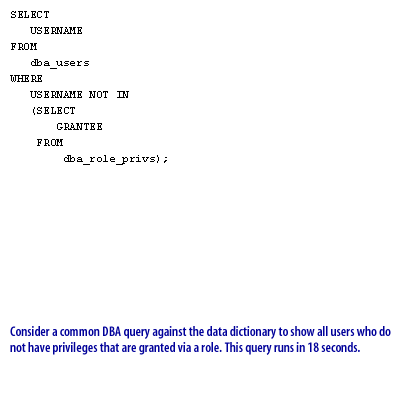
SELECT
USERNAME
FROM
dba_users
WHERE
USERNAME NOT IN
(SELECT
GRANTEE
FROM
dba_role_privs);

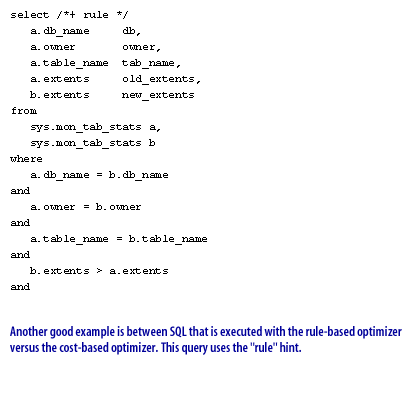
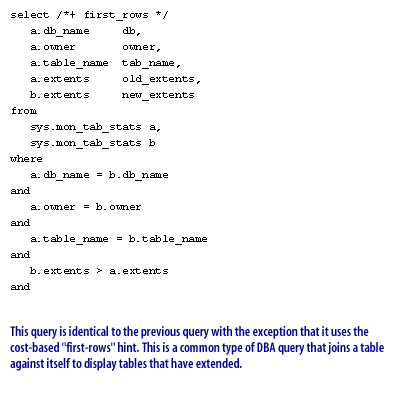
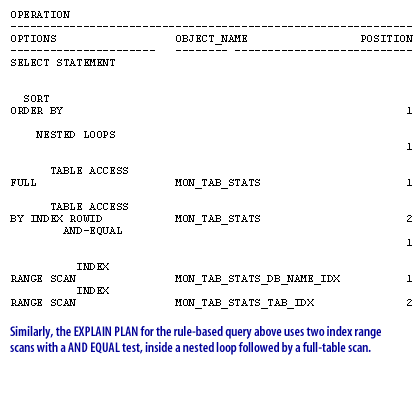
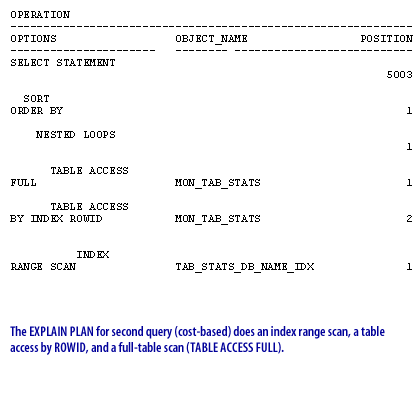
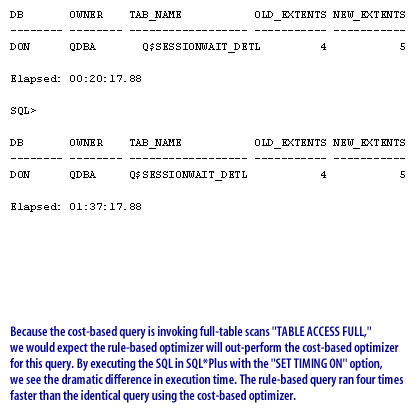
In lieu of the fact the developers do not always create SQL that will perform perfectly, the DBA can employ a number of techniques to bridge this gap.
Facilitating SQL Management Techniques employed by DBAs
- Become an SQL tuning expert and offer to share your expertise with the developers
- Create SQL tuning tip sheets.
- Install Oracle SQL tuning tools such as (SQLab or SQL*Analyzer) and encourage the developers to use these products.
- Be a mentor. Let the developers know that they will not be criticized or ridiculed for sloppy SQL.
